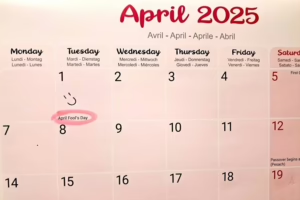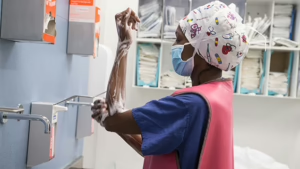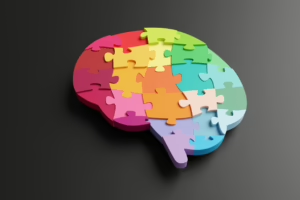Multi-generational Workplace has become a reality. It doesn’t matter if you like it or not. Every organisation needs to consciously consider the talent pool, knowing that in order to get the most out of talent, they must be prepared to accept any employee, at any age, in any area of the company.
The Key Takeaways
- Accept and embrace generational diversity – a multigenerational team will benefit your business, whether you hire it or keep it.
- Communication is best achieved by using multiple channels that are suited to the preferences of each generation.
- The more options and choices available, from flexible work to flexible benefits – the better.
- Make sure your management team has the vision, skills and motivation needed to include all ages.
- Priorities can differ between employees.
Table of Contents
Recap of the Generations
These classifications should be taken with a pinch of salt, as they are stereotypes. However, these labels can also be useful in identifying the types of jobs, organisational structures and rewards that will attract and retain workers of all ages. These labels should be viewed as stereotypes, and taken with a grain of salt. However, just as they can be used to lump together individuals, they can also help identify the types of jobs, organizational structures, rewards, and benefits that can attract and keep workers of all ages.
Traditionalists (1928-1945)
Also called the Silent Generation. The youngest members are in their 70s, but this is no reason to stop working. Many are still active and engaged due to improvements in their health. Some may not even be interested in senior positions. They prefer to work in lower-key jobs, such as retail or frontline positions. This generation, as the name suggests, expects a workplace that is based on ‘traditional values’ and rewards. Also, they want to be treated with respect for their age and experience.
Baby boomers (born 1946-1964).
They are loyal workers who have a deep understanding of their job and the industry in which they worked. They are also collaborative workers, even though they may have a hard time adapting to change. They need a certain amount of certainty, such as predictable rewards and management methods.
Generation X (born 1965-1980).
Some people refer to this generation of ‘latchkey children’ because they grew up with dual-career families. People often highlight the independence of Generation X workers, which can fuel their motivation. The Generation X is tech-savvy, but not entirely dependent on it. They are able to take direction, but they also possess a lot of personal motivation and resilience. Generation X is happy to accept targets that are not overly prescriptive.
Millennials/Generation Y (born between 1981-1996)
Millennials are a generation that has a strong sense of justice and values. A sense of purpose, and a good purpose will go a long way in attracting this generation. ED&I, ESG and CSR all play a role in attracting this generation to the workplace. The company culture has to be positive and strong for this generation. They want to feel involved at work and have an impact on the world.
Generation Z (born between 1997-2012)
First generation of children to have grown up in a world where the internet, technology and the Internet played a major role from day one. This generation of workers is a digital native and needs independence as well as the motivation to improve and find more efficient ways to do things. GenZ loves diversity and being a part of an inclusive workforce. They are looking for a good work-life, meaningful work and future focus.
Generation Alpha
The workplace is still adjusting to the new generation, but it will likely cause a shift in the priorities and demands of the workplace. This generation was born during the pandemic, which had a significant impact on social skills and expectations. They also rely heavily on technology to entertain themselves and interact with others.
1: Spread the Word about Everything
We live in an age of multi-channel communication. There are many different ways to communicate – on-line, offline, and in person. But there is also a proliferation of channels, each with its own unique idiosyncrasies. This is a complex situation, made more complicated by the fact different people have different preferences for online communication.
Some generations may have certain apps they consider suitable for use at work. Some people may not even consider having these apps on their phones. Some employers may find that texting works for them, but in other cases, they have built their own communication networks using apps, videos, standard work platforms, or HR administration software.
It can be difficult to get simple messages across to your entire team. Communication must be phrased differently to suit each channel. It can be difficult to ensure that each message has the same tone and is delivered in a consistent manner. A message can appear formal one moment, but casual another. It is a challenge to match the message with the media.
To be effective, HR needs to learn how to communicate on all platforms. This is not only true for internal communications but also for attracting and onboarding new employees.
If you place a TikTok ad in the right places, it could bring in many applications. However, these applicants may come from a specific generation or type of candidate. Other parts of the workforce can be targeted by postings in professional publications, on job boards or with recruitment agencies. All of this is important if HR wants to attract talent from all generations.
2: Opportunities Always Knock
Consider flexibility when deciding where, how and when to work. The possibilities are endless. You might think that you only need managers, supervisors and 9-5ers for one part. You might also think that they need to be at a certain location and time in order to perform the job, but is this true?
You can attract different generations to work for you by mixing up your work style. What is really needed in the office and why? What can you do at home? Flexibility can be incorporated into jobs in certain situations. How can jobs and packages be rearranged to make them more attractive and suitable for different parts of the workforce.
Different generations will be motivated in different ways. However, there are few who won’t be motivated by the prospect of a career ladder and the opportunity to progress within an organization. Not everyone can progress in the same manner. As long as a business recognizes the potential of its employees and tries to help them, the aspirations for any worker regardless of their generation can be met.
You should remember that someone who is just starting out in their career may have very different expectations and requirements than someone with more experience. There’s no reason why they can’t both do the same job, if it benefits them.
A newcomer might see their job as the beginning of their career, and want to know what possibilities lie ahead. Later in life, someone may decide it’s time to accelerate their career. They can still do the job but don’t have to think it will lead anywhere or be part of some grand scheme. It could be just a wonderful thing to do.
For HR to truly be effective in meeting the aspirations and needs of different generations at work, it is important to understand the various career options available to employees as well as what they want.
It could also be about offering people training, especially if they need a bit more knowledge or skills to move up the ladder. This support is needed to ensure that the right person gets the job they want in the best way.
3: Flex Those Benefits
The rewards that different generations seek are also different.
At a basic level, lifestyle and personal preferences will always have an impact on what motivates and retains certain personnel. It’s not everyone’s cup-of-tea to join a gym, and it doesn’t really depend on your age.
It is important to address this by providing individuals with the flexibility and choice in rewards they can choose throughout their careers. Total rewards packages can provide equal reward for all employees, while also giving them the opportunity to select what they think will make a real difference in their lives.
When putting together reward programs and distributing them, it’s important to keep in mind that each generation will have different needs. childcare benefits, for example, are more relevant to certain employees.
Employee may become more interested in eldercare when they get older, as their parents will need more time and support from them. As life changes and demands change, rewards and benefits need to reflect these influences and differences. Don’t forget that there are differences in rewards between those who have families and those who don’t. Nothing within your plan should suggest discrimination or bias towards one group of circumstances.
Make sure you are offering benefits for wellbeing that are appropriate to all the generations within your company. There are different meanings for financial, mental, social and physical wellbeing to different generations. It is not worth offering the same benefits to all employees if they find them irrelevant.
Different generations will need different financial advice. The generations also have different views on what social well-being might be. The employers’ job is again to offer choices, and then step back.
Teamwork is key to success
Multigenerational teams can be a great asset to any business. They bring together people from different generations, allowing them to share their ideas and perspectives. Multigenerational teams allow everyone to benefit from the ideas and perspectives of others.
Team Building, and Leadership within a Multi-Generational Workforce may require additional soft skills on the part of your management team. It is important to have good listening skills and be sensitive to the needs of each generation. Understanding generations is particularly helpful in this situation. If you know how people communicate, how they express themselves and what ideas they may want to present, you can maximize everyone’s input.
It is important to note that this is not an easy task. Multi-generational groups are great at raising awareness and presenting a variety of perspectives on a certain idea or issue. However, they can be frustrating if people don’t feel that their opinions are being heard or aren’t given the attention they deserve.
To get the most out of these teams, it is important to appreciate the knowledge and skills that each person possesses. It is important to have a strong sense of respect and to not allow the environment to degenerate into a “free for all”. People skills are required to manage such teams and multi-generational workplaces in general.
5: Train line managers
The experience of employees will only be as good as the line manager.
Line managers are often too focused on their performance, the need to be efficient and productive, and forget to take into account other aspects of working.
Managers can also be unaware of their own bias when it comes to the decisions they make and how they treat employees. Assumptions or unconscious bias may lead to certain employees being sidelined, or not receiving the support they need in order for them to reach their full potential. Managers might think that they understand what an individual wants or needs, but may not be able to do so.
As mentioned above, managing multigenerational teams can be challenging. Organisations may need to invest more in soft skills for their managers and leaders to ensure that every generation is heard and valued.
Training may also include areas like effective communication, and the use of technology to bring teams together. It is important to understand how each generation, or individual, wants to be informed. However, this requires great coordination from the beginning.
It is important to be aware of all the available management tools, as well as the various generations that are present in the workplace.
6. Talk to your people
Communication is not a one-way street. You may be proud of your ability to use social media to spread your message, but you must also be ready to listen to the messages that come back.
You need to make sure that is ready to listen to them when they talk. Employee Resource Groups can be a great way to encourage staff to collaborate and create a diverse and inclusive workplace. These groups give employees the opportunity to make a direct contribution to their workplace by introducing and participating in activities that they have created and directly contributed to.
ERGs reflect the characteristics of the workplace and bring workers together who share that characteristic. ERGs are good at uniting certain generations, but also encourage people from different generations to work together.
ERGs allow their members to work together and are a great tool for employers who want to understand the feelings and sentiments of their employees. ERGs can be the catalyst for specific initiatives, or they may lead to specific provisions that make a difference for employees. They may lead to new initiatives that encourage employees to work together, and increase productivity.
7: Don’t stereotype
The article began with a generational classification at the workplace. Nevertheless, it warned against stereotyping to satisfy generational requirements. Inflexible provisions are likely to alienate just as many people as they will attract. If you want your retention and attraction strategies to be successful, they must take into account the uniqueness of the people who you are trying to hire.
The Human Resources World’s webinar about the multi-generational workplace, while the panel identified up to five generations in the workforce, it was noted that such stereotypes are not always helpful when attempting to attract and employ people.
Although generation classifications can be useful in understanding the issues that affect your employees’ likes and dislikes, they shouldn’t dictate what you do. You need to have room for extras, flexibility, and going the extra mile in order to attract the right people.
FAQs
Why is it important that we understand the differences between generations?
You need to be non-biased when you approach each candidate, regardless of their age. Bring together talent from different generations and your organisation will gain access to a variety of skills.
How do we communicate effectively across generations?
Communicate however you can. Find out how each generation, or individual, prefers to receive information. Although generational classifications can be useful, remember that everyone is an individual.
What benefits are attractive to multi-generational employees?
You should be as flexible as you can, both with your career/work rewards and benefits. For example, younger employees will value career advancement and work-life harmony, while older workers may prioritize financial stability and healthcare benefits. A flexible benefits package allows employees to select the benefits that are most important to them.
How can we provide career development opportunities to employees of all ages?
Flexible career paths should accommodate different goals such as rapid advancements for younger employees, or lateral opportunities to experienced employees. Training, mentoring, and development tailored to the needs of each generation encourages growth.
How can we create multi-generational, effective teams?
Invest in line managers to ensure that the skills needed for a multi-generational workforce are available. Respect for other employees will help them to respect and recognise each other. Listening and adaptability are soft skills that will help you manage diverse teams.
The conclusion of the article is:
While it can be challenging to hire and retain a workforce of different generations, the benefits are great. Diversity is a great asset for employers, as it increases innovation, market share and productivity. However, this workforce must be supported by clear and effective management of the workplace. Line managers must be able to work with workers of all ages. HR should ensure that policies are nondiscriminatory, and provide all employees the recognition, reward and incentives they need. It is important to create opportunities for the diverse age groups to work together, share ideas and move their workplace forward.



